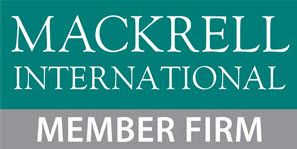By Curtis A. Welch
Published in the OSB Construction Law Section Newsletter
As construction lawyers and many others in the construction industry are aware, the Spearin doctrine provides that a project owner impliedly warrants to the contractor that the plans and specifications are accurate and suitable. See United States v. Spearin, 248 US 132, 137 (1918); see also General Const. Co. v. Oregon State Fish Com., 26 Or App 577, 581 (1976) (citing Barbour & Son v. Highway Com., 248 Or 247 (1967)).
The Spearin doctrine is a bedrock principle in construction law. It is expressly followed in thirty-seven states, and eleven other states have acknowledged the implied warranty of plans and specifications. See Buckner Hinkle, Jr., Robert J. MacPherson, James F. Nagle, Still Spearin After All These Years?, 12 No. 1 Journal of the American College of Construction Lawyers, n. 97- 99 (January 2018).
A. Lakehill Investments case
In September 2020, the Washington Court of Appeals, in Lakehill Investments LLC v. Rushforth Construction Company, Inc., 472 P3d 337 (Wash Ct App 2020), provided important clarification for contractors relying on the Spearin doctrine as an affirmative defense.
In Lakehill, the Court held that in order for a contractor to prevail on an affirmative defense based on the owner’s defective plans and specifications, the contractor is required to prove that all of the construction defect damages established by the owner are attributable to the owner’s defective plans and specifications. The Court reversed the judgment for the contractor because the jury had been instructed that the contractor could avoid all liability for an area of work if there was proof of a defect in the plans and specifications for that area, even if the owner proved that the contractor’s deficient performance caused some of the damage in that area. Id. at 344-45.
The Lakehill case involved claims arising out of the construction of a project known as Lake Hills Village, which included a public library, two mixed-use residential/retail buildings, three commercial buildings and townhouses. The owner, Lake Hills Investments, Inc. (“Lake Hills”) contracted with general contractor Rushforth Construction Company dba AP Rushforth (“AP”).
AP was the contractor for four separate phases of the project. AP contracted to begin construction on February 16, 2013 and to be completed by January 31, 2015. Each of the four phases had its own substantial completion date and Lake Hills could assess liquidated damages for delay days past those substantial completion dates.
Each of the four phases was delayed. In November 2014, Lake Hills notified AP that it was in breach of the contract schedule. Lake Hills also began identifying work that it considered defective. AP blamed the delays on Lake Hills arbitrarily cutting its pay applications, which made it difficult for AP to hire and retain subcontractors. Further, AP blamed construction defects on Lake Hills providing “a sketch” or “a concept”, rather than buildable designs. Id. at 342.
Relations between Lake Hills and AP deteriorated and in late October 2015, Lake Hills filed suit against AP for breach of contract. AP stopped work a few weeks later and filed its own breach of contact claim, alleging underpayment.
The case proceeded to trial, which lasted almost two months. Two dozen witnesses testified before the jury. One witness, the owner’s representative overseeing the project, testified for six-and-a-halfdays.
The Court noted the vast amount of pretrial discovery in the case—the parties produced more than 1,000,000 documents and took 59 depositions. The parties also participated in six days of mediation.
Using a special verdict form, the jury returned a mixed verdict, finding that construction defects by AP breached the contract, and awarded damages in six of the eight areas of claimed defects. The jury also found that each phase of the project was completed past its substantial completion date, but that Lake Hills was responsible for the vast majority of delay days. Additionally, the jury found that AP did not breach the contract by stopping work and that Lake Hills breached the contract by underpaying AP. The trial court awarded a net judgment to AP of $9,624,695.80, including attorney fees and costs. Id. at 343. Lake Hills appealed from the judgment and AP cross appealed.
The jury instruction at issue–Jury Instruction 9–stated:
For its affirmative defense, AP has the burden to prove that Lake Hills provided the plans and specifications for an area of work at issue, that AP followed those plans and specifications, and that the[construction] defect resulted from defects in the plans and specifications.
Id. at 344. Lake Hills argued that the trial court erred by not stating AP’s burden was to prove that the “construction defect results solely from the defective or insufficient plans or specifications.” Id. (emphasis in original).
The Court held that the instruction misstated the law and it was reversible error to give that instruction to the jury. Id. The Court reasoned that under the instruction, proof of any defect in the plans and specifications for an area of work would let AP avoid all liability for that area even if Lake Hills proved AP’s deficient performance caused some of the damage. Id. The Court held that the instruction incorrectly understated AP’s burden of proof. Id.
In so holding, the Court stated:
A defective plans affirmative defense can relieve a breaching general contractor of its liability in proving an alternate proximate cause. AP’s affirmative defense theory was that a single cause, defective plans or specifications, injured Lake Hills. To be relieved of liability for its breaches, AP had to prove Lake Hills’ defective designs “solely” caused the plaintiff’s damages. This standard, expressly articulated in Kenney, is also acknowledged by commentators on construction law.
Id. at 346.
B. Discussion
The Lakehill court decided a narrow issue, albeit an important one. Contractors asserting an affirmative defense based on defective plans and specifications will need not only to present sufficient evidence and argument to convince a jury that the defective plans and specifications were the sole cause of the owner’s damages, but also the jury must be appropriately instructed regarding this burden.
In the Lakehill case, it was merely a matter of one word–inserting the word “solely” after the word “resulted” in the subject jury instruction–that would have cured the error.
It appears, based on the Lakehill court’s discussion of the case, that the contractor did present evidence for the jury to conclude that the defective plans and specifications were the sole cause of the owner’s damages. For example, in relation to the owner’s claim of excessive cracking in the concrete slab of the underground parking garage for the project, the contractor’s expert testified that he saw no construction errors in the slab and that the plans and specifications caused the cracking by requiring the use of rebar as reinforcement throughout the slab. Lakehill, 472 P3d at 345.
The Court pointed out the well-settled principle that an owner’s breach of the warranty that the plans are workable and sufficient could be the basis of a contractor’s claim, a counterclaim, or an affirmative defense. In discussing the reason why the burden of proof is on a defendant contractor in relation to an affirmative defense, the Court noted that “[b]ecause the defendant asserting an affirmative defense presents an independent legal theory based on evidence extraneous to the plaintiff’s case, it bears the burden of proof.” Id. at 344.
The Court relied on four Washington appellate court cases in reaching its decision, but also made it clear that its decision was not unique to Washington construction law. The Court referred to writings by commentators in the construction law field–the national publications of Michael T. Callahan, et al., Construction Disputes: Representing the Contractor § 20.02 (4th ed. Supp. 2020) and William Schwartzkopf, Calculating Construction Damages § 1.07 (3d ed. Supp. 2020). Id. at 346 n 42.
The Lakehill opinion is one that is important to study next time a construction practitioner has a case involving a defense based on defective plans and specifications, particularly when the case is going to be tried before a jury.
Contact Curt at 503-227-1111 or cwelch@sussmanshank.com.


